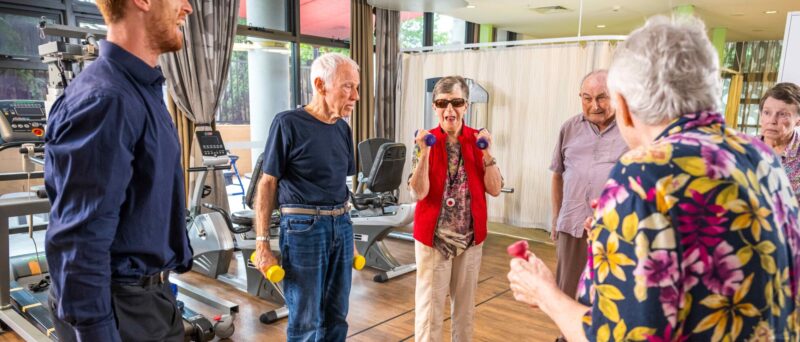Falls are one of the leading causes of injury and hospitalisation for older adults, particularly in residential aged care settings. As people age, they become more susceptible to falls due to factors such as decreased muscle strength, balance issues, vision impairment, and chronic health conditions. For residents in aged care, a fall can have significant consequences, impacting their physical health, mental well-being, and quality of life.
Falls are a major health concern for seniors, with around 30% of older adults experiencing a fall each year. For those in aged care facilities, the risk is even higher due to the prevalence of mobility issues, cognitive impairments, and medication side effects that can affect balance and coordination. A single fall can lead to serious injuries like fractures, head trauma, and loss of independence, making falls prevention a top priority for aged care providers.
Key Factors Contributing to Falls
Understanding the common factors that lead to falls can help aged care facilities create a safer environment. Some major contributors include:
- Physical Limitations: As we age, we experience muscle weakness, joint stiffness, and reduced coordination, all of which increase the risk of falling.
- Cognitive Impairment: Conditions like dementia can affect judgement and balance, leading to a higher likelihood of falls.
- Medication Side Effects: Many older adults take multiple medications, some of which can cause dizziness, low blood pressure, or drowsiness, increasing fall risk.
- Environmental Hazards: Poor lighting, uneven flooring, cluttered spaces, and lack of grab bars are all environmental risk factors that can lead to falls.
- Sensory Impairments: Reduced vision or hearing can affect balance and increase the likelihood of accidents.
Effective Strategies for Preventing Falls in Aged Care
1. Conduct Regular Assessments
Regular fall risk assessments for each resident are essential. This includes evaluating their physical abilities, cognitive function, medications, and environment to create a personalised falls prevention plan.
2. Exercise Programs to Improve Strength and Balance
Structured exercise programs focusing on strength, balance, and flexibility have been proven to reduce fall risk in older adults. Allied health professionals, like physiotherapists, occupational therapists and exercise physiologists, play a crucial role in designing safe exercise routines that cater to residents’ physical limitations and capabilities.
3. Environmental Modifications
Modifying the physical environment can significantly reduce the risk of falls. This includes:
- Ensuring adequate lighting in hallways and common areas
- Installing handrails, grab bars, and non-slip mats
- Keeping walkways clear of obstacles
- Ensuring proper bed height and providing fall mats for high-risk residents
- Regularly checking and maintaining floors and furniture to prevent tripping hazards
4. Medication Management
Medication reviews are essential in falls prevention. By monitoring and adjusting medications, especially those that affect blood pressure or cause drowsiness, healthcare professionals can help reduce dizziness and improve balance, decreasing the likelihood of falls.
5. Promote Proper Footwear
Encouraging residents to wear proper, well-fitting footwear with non-slip soles can improve stability and reduce fall risk. Staff should discourage residents from walking in socks or slippers that lack adequate grip.
6. Educate Staff and Residents
Falls prevention is a team effort. Training staff on fall risks, safe transfer techniques, and emergency response can make a significant difference. Educating residents on safety practices and the importance of seeking help when needed also helps promote a safer environment.
7. Use of Assistive Technology
There are various assistive devices and technologies available to support falls prevention. Wearable alert systems, bed and chair alarms, and mobility aids (e.g., walkers, canes) can help residents maintain balance and alert staff to any incidents.
8. Implement Falls Prevention Programs
Structured falls prevention programs tailored to aged care settings can provide comprehensive support. These programs often include a mix of assessments, exercise routines, educational sessions, and environmental modifications. Facilities should regularly evaluate the success of these programs and adjust as needed to ensure maximum effectiveness.
The Role of Allied Health in Falls Prevention
Allied health professionals, such as physiotherapists, occupational therapists, and exercise physiologists, play a vital role in falls prevention within aged care. They provide valuable insights into mobility and balance assessments, create individualised exercise plans, and offer training on safe movement techniques. Occupational therapists also help by assessing and adapting the living environment to minimise hazards, ensuring residents can navigate their surroundings safely.
Concentric offers a dedicated falls prevention program through their range of exercise based rehabilitation and preventative programs within select aged care facilities. Our services are tailored to each individual resident to achieve outcomes such as increased social participation, increased strength, mobility and balance, and most importantly, proven to decrease functional decline. We perform initial assessments, functional reviews, care plan reviews and deliver short term booster programs within the home. They can also deliver individualised or group Wellness Package sessions, create home exercise programs and complete quarterly re-assessments. We also offer homecare assistance and virtual allied health consults with visits by an allied health assistant (AHA).
To find out how Concentric can support you or your loved one, email support@concentric.com.au or phone 1300 148 160.


